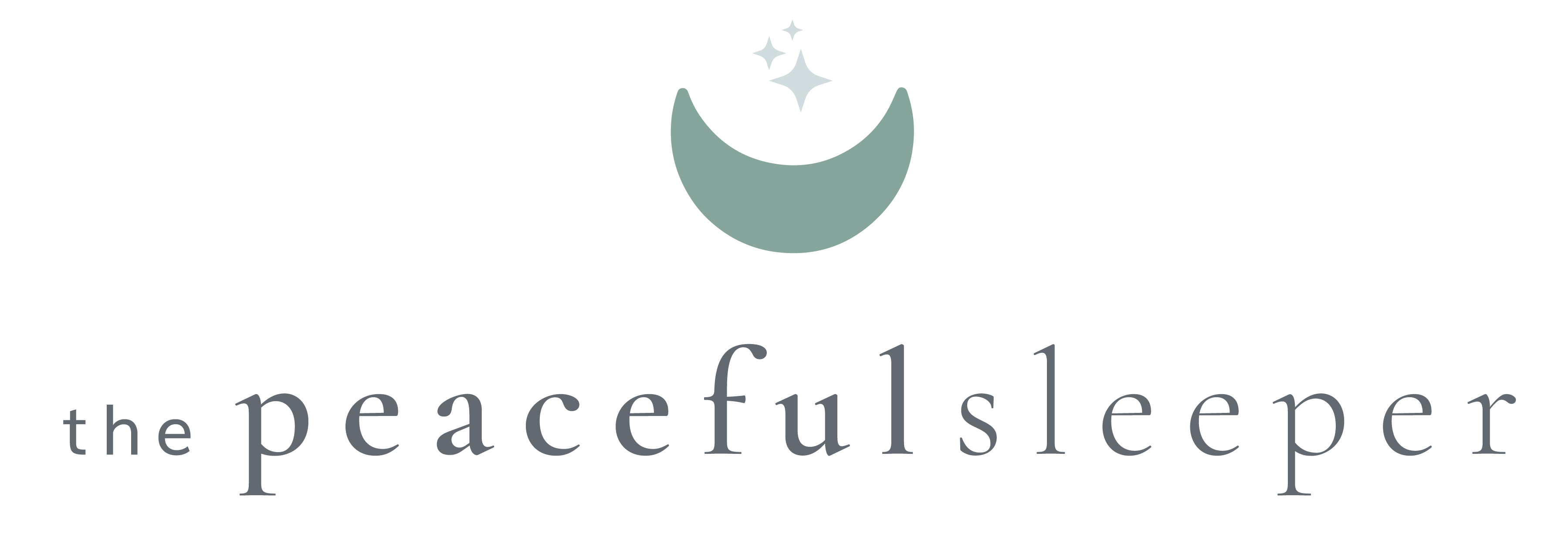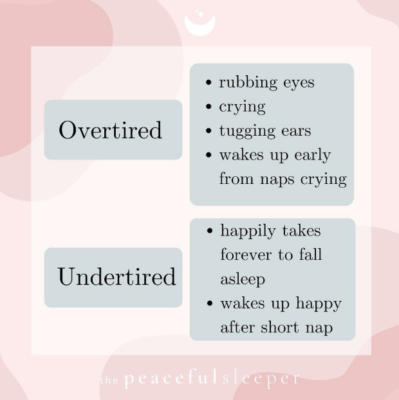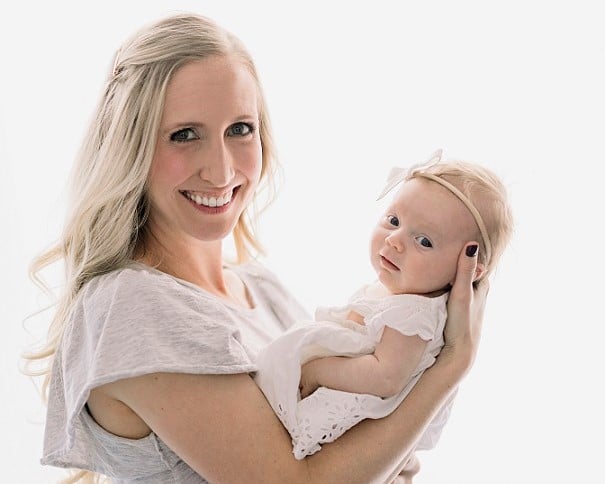Is your baby struggling to fall asleep because they’re overtired or undertired? Getting your baby’s schedule just right can feel like solving a puzzle. The two issues might sound similar, but they require very different fixes—and understanding the difference can make a world of difference for your baby’s sleep. In this blog post, I’m going to answer the following questions:
How do I prevent overtiredness and undertiredness?
What if we’re still struggling?
Let’s break it down so you can confidently spot the signs and adjust your baby’s schedule for better sleep.

What is overtiredness?
Overtiredness happens when your baby is awake past their optimal wake window. Here’s how it works: as babies start to feel tired, their bodies naturally produce chemicals that help them wind down and get ready for sleep.
But if they don’t fall asleep when those “sleepy chemicals” are flowing, their bodies kick into overdrive and release stress hormones like cortisol and adrenaline to keep them going. This leads to a state often described as “wired and tired”—a frustrating mix of exhaustion and overstimulation that makes it so much harder for your baby to settle down.
Signs of Overtiredness:
- Fussing or frying
- Rubbing their eyes
- Tugging on their ears
- Arching their backs
- Flailing or seeming restless
The key to preventing overtiredness? Catch those sleepy cues early! Watch for subtle signals that your baby is ready for sleep, like zoning out, quieting down, or rubbing their eyes. If you act quickly, you can help your little one drift off before that adrenaline takes over.
Click here to learn more about overtiredness on Instagram.
What is undertiredness?
Undertiredness is the opposite problem—it happens when your baby hasn’t had enough wake time or stimulation to feel ready for sleep. Instead of being fussy or irritable, an undertired baby may seem perfectly content…but just not sleepy.
Signs of Undertiredness:
- Taking a long time to fall asleep (but not fussing)
- Waking up happy after a short nap
- Playing in their crib instead of settling down
If you notice these patterns, it might be time to adjust your baby’s schedule. For example, you may need to:
- Gradually extend wake windows to allow for more activity.
- Drop a nap (for older babies or toddlers).
- Push bedtime slightly later to match their sleep needs.
Click here to check out more on overtired vs. undertired on Instagram.
How do I prevent overtiredness and undertiredness?
Finding the sweet spot between overtired and undertired requires careful observation and a bit of trial and error. Here are some tips to help you create a balanced routine:
1. Watch for Sleepy Cues: Especially with younger babies, cues like yawning, rubbing their eyes, or turning their head away can signal it’s time to start the winding down process.
2. Track Wake Windows: Babies have age-specific wake windows—these are the average recommended lengths of time they should be awake between naps. Staying within these ranges can help you avoid both overtiredness and undertiredness.
Here are the average wake windows based on age:
| Age | Number of Naps Per Day | Wake Window Between Naps | Wake Window Before Bed |
| 0-3 months | 4-7 | 60-90 min | 1-2 hours |
| 4 months | 4 | 90 min | 2 hours |
| 5 months | 3 | 2 hours | 2.5 hours |
| 7 months | 2 | 2-3 hours | 4 hours |
| 14 months | 1 | 5 hours | 5 hours |
Remember, every baby is unique! These are just averages. Some babies do better with longer wake windows for their age, and others do better with shorter wake windows for their age.
3. Adjust Nap Schedules: If naps are consistently short or bedtime feels like a struggle, consider tweaking your baby’s nap schedule. Dropping a nap or shifting nap times can make a big difference.
4. Encourage Active Wake Time: Ensure your baby is getting plenty of stimulation during wake periods, especially as they grow older. This can include tummy time, sensory play, or engaging with books and toys.
What if we’re still struggling?
Every baby is different, and it’s normal to face challenges while fine-tuning their schedule. If you’re feeling stuck, we’re here to help! A sleep consultation with one of our certified experts can provide personalized guidance for your unique situation.
Whether your baby needs shorter wake windows, a revamped nap routine, or just a little extra support, we’ve got you covered. Our age-based content libraries are also packed with resources to help your family enjoy better sleep.
Recap on Overtired vs. Undertired
Understanding the difference between overtired and undertired can be a game-changer for your baby’s sleep. By learning to recognize the signs and fine-tuning your schedule, you can help your little one get the rest they need—and enjoy more peaceful nights for your whole family.
Whether your little one is a newborn (0-4 Months Content Library), 4-24 months (4-24 Months Content Library), or a toddler (2-5 Years Content Library), we have the resources you need to get your family the sleep you all deserve!
If you’re ready to give your baby (and yourself!) the gift of great sleep, reach out for a consultation or explore our content libraries today. We’d love to help!





0 Comments